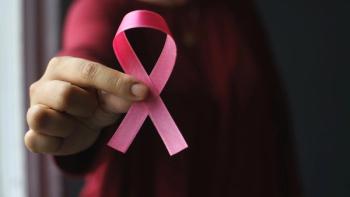
- Rare Cancers - Summer 2017
- Volume 1
- Issue 1
Comparing Male and Female Breast Cancer
Is male breast cancer more similar or dissimilar to breast cancer in women?
Charles L. Shapiro, M.D.
Men have breast tissue too, and some of them will develop breast cancers. Estimates of the annual incidence of invasive breast cancer in men in 2017 are just less than 2,500 cases, or 1 in 1,000 men over their lifetime. In contrast, the incidence of invasive breast cancer in women in the United States is about 253,000, or 1 in 8 women over the course of a lifetime — roughly 100-fold higher than men. As one can imagine, it’s been difficult to understand the biology or to perform research and clinical trials because of the relative paucity of males with breast cancer. Nonetheless, there is plenty of demographic and descriptive data on risk factors, how breast cancer presents in males and, more recently, there are studies that describe the molecular genetics of male breast cancer.
The primary risk factors for breast cancer in men and women are similar, with one exception. Common to both sexes is aging, although the average age at presentation is slightly older in men about 66, versus 61 years in women. Common risk factors also include family history, a higher body mass index or obesity and chronic alcohol use of greater than two drinks per day. Other risk factors include liver diseases such as cirrhosis and radiation exposure of breast tissue, most commonly in individuals with Hodgkin disease who receive mediastinal radiation and exogenous estrogens, e.g., taking hormone replacement therapy for 10 to 15 or more years in postmenopausal women, or taking exogenous estrogens in transgender males. One of the greatest risk factors for developing male breast cancer is Klinefelter syndrome, also called XXY karyotype, that affects 1 in 500 to 1,000 newborn males.
Some of the factors contributing to why male breast cancers are typically larger and are diagnosed at more advanced stages are that there is no routine mammographic screening, which is the way the majority of breast cancers in women are detected. The lack of awareness that a lump that develops in a man’s breast could be breast cancer can also lead to delayed diagnosis and diagnosis at a more advanced stage. Also, the ratio of breast tissue to breast cancer is much smaller in men. Hence, skin involvement and locally advanced breast cancers are more common in men. In a recent study, the mean tumor sizes in men and women, respectively, were 2.3 centimeters and 1.7 centimeters; stage 1 breast cancers were 22 percent and 60 percent; and estrogen receptor positive breast cancers were 97 percent and 83 percent.
Perhaps the most interesting aspect of male breast cancer is the higher frequency of inherited genetic mutations in predisposing breast cancer genes of known importance in female breast cancers. Whereas the lifetime risk of male breast cancer is about 1 per 1,000, carriers of deleterious germline mutations have a proven high risk of developing the disease; for BRCA2, it is 65 per 1,000, or 65-fold higher. A recent study reported the results of multi-gene panel testing in 715 men with breast cancer. The main findings were an extremely high rate of deleterious BRCA2 germline mutations; an 11 percent incidence of BRCA2 mutations in male breast cancer over that of the general population. This 11 percent rate compares to a 2 percent incidence of BRCA2 mutations in females with breast cancer, or 0.1 percent incidence in the general female population. Thus, a man with breast cancer has about a 5-fold higher chance of having BRCA2-associated breast cancer than a woman. Other genes identified were CHEK2 with 4 percent and PALB2 with a 0.5 percent incidence in male breast cancer.
What does this mean for the man who develops breast cancer? First, in any individual who develops breast cancer, a comprehensive family history of cancer in first- and second-degree relatives and ages at which they developed cancer should be taken. Even in the absence of a family history of breast or ovarian cancer, all males with breast cancer should be considered and most referred for genetic counseling and genetic testing. Indications are for multigene panel testing because of the relatively high incidence of germline mutations in CHEK2 and PALB2. As a result of this testing, unaffected family members may be tested to identify deleterious mutations, so that increased surveillance or prophylactic surgery may occur as clinically indicated.
In addition, BRCA2 mutation carriers have higher lifetime risks of other cancers; for example, pancreatic cancer in both men and women and for prostate cancer in men. At present, it is unknown why men have higher rates of BRCA2-related cancers, or male carriers of BRCA2 mutations are at higher risks of other cancers. Further research is needed to answer these questions.
Charles L. Shapiro, M.D., is a professor of medicine, hematology and medical oncology and co-director of the Dubin Breast Center at Mount Sinai Hospital in New York City. He earned his medical degree from S.U.N.Y, Buffalo — School of Medicine & Biomedical Sciences. Shapiro is the recipient of several awards, including America’s Top Doctors for Cancer in 2005.
Articles in this issue
over 8 years ago
Making Strides in Rare Cancersover 8 years ago
A Safety 'NET'over 8 years ago
One Longtime NET Survivor's Quest to Educate Patientsover 8 years ago
A Revolution in the Treatment of Neuroendocrine Tumorsover 8 years ago
Angel in the Air for Patients With Cancerover 8 years ago
New Therapies Bring Hope to Rare Cancer Typesover 8 years ago
Immunotherapy Treatment Advances in Anal Cancerover 8 years ago
Hitting a Target in Gastrointestinal Stromal Tumorsover 8 years ago
Understanding Retroperitoneal Sarcoma



